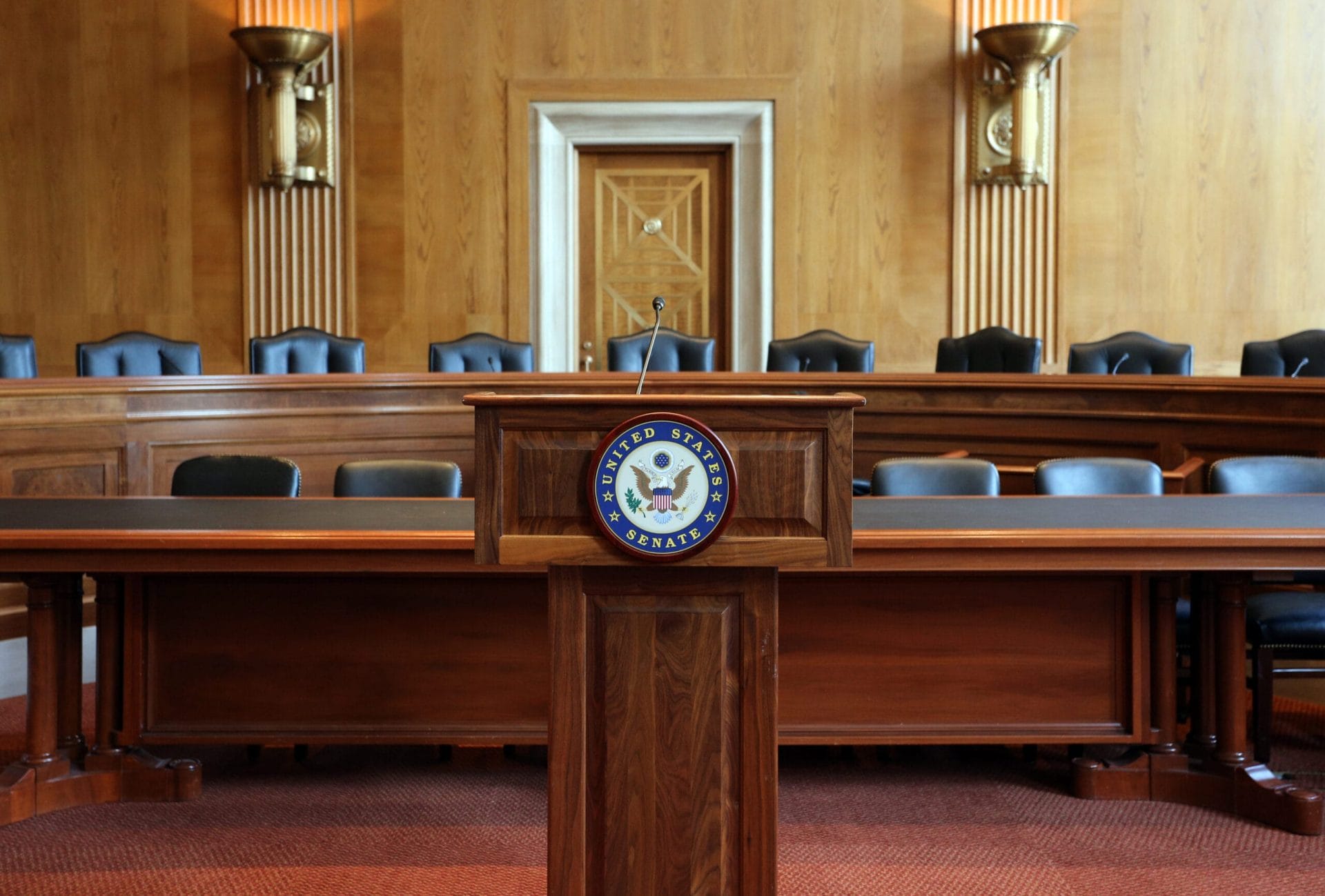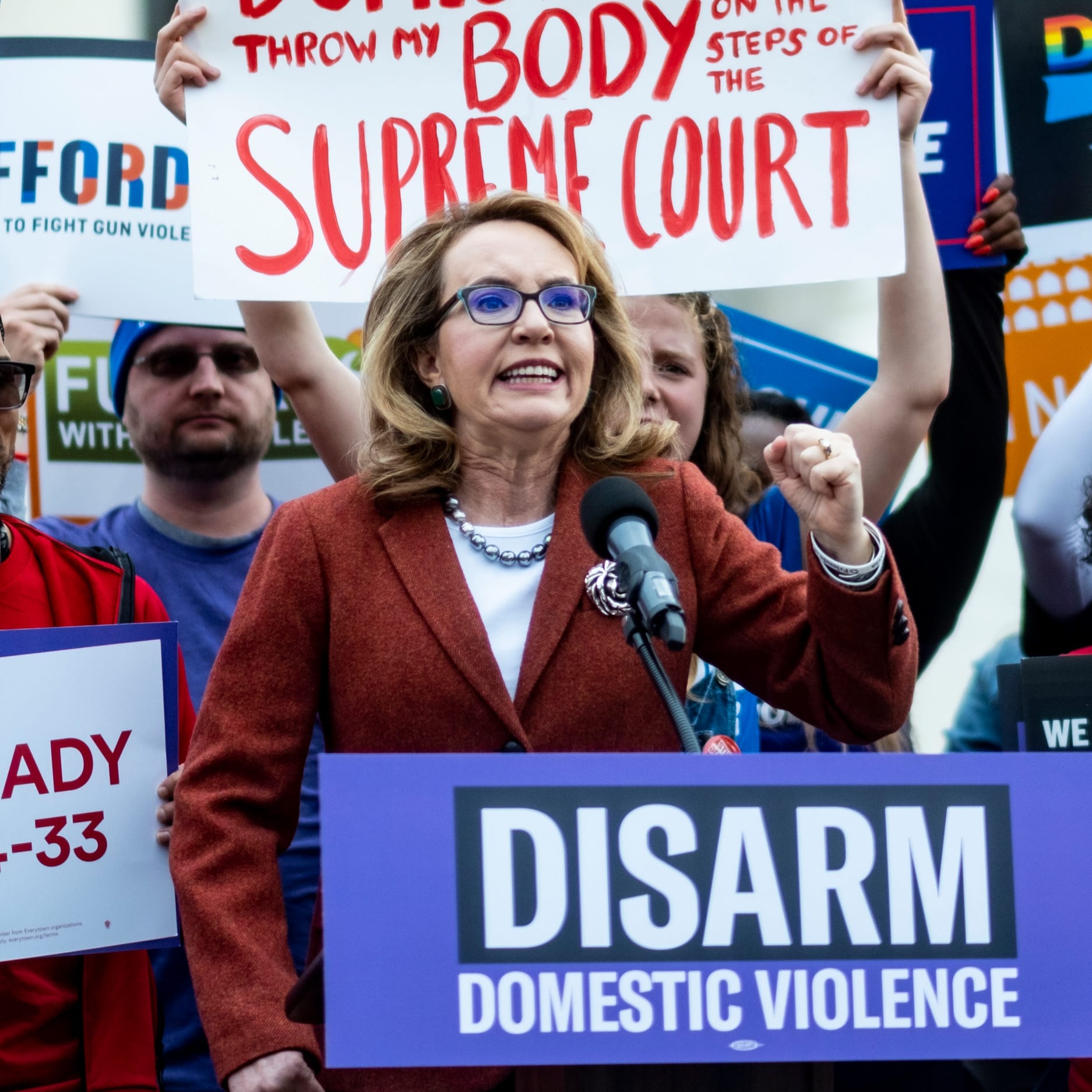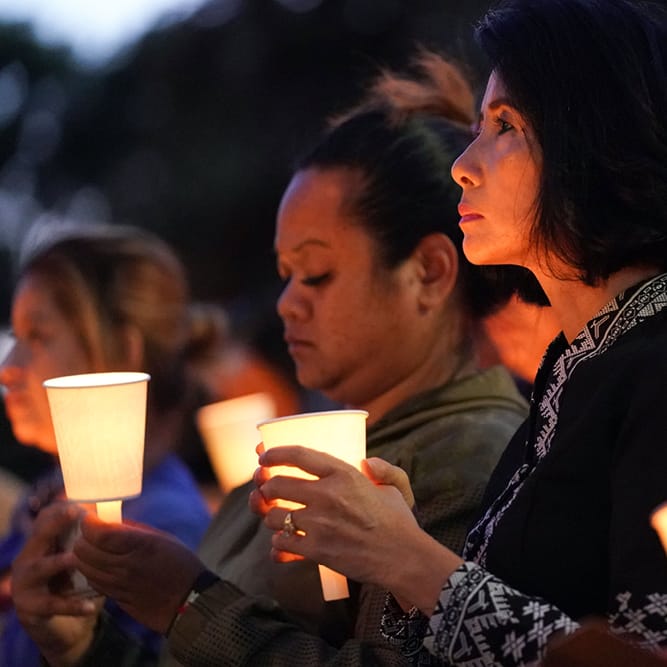
I Testified in Congress about Bump Stocks. Here’s What I Had to Say.
Conversion devices help turn legal guns into machine guns. But there’s a reason fully automatic weapons aren’t available for civilian use.
Today, I testified in front of the Senate Judiciary Committee about the dangers of bump stocks, auto sears, and other conversion devices designed to turn semiautomatic firearms into machine guns.
Both bump stocks and auto sears are extremely dangerous conversion devices that can be added to guns to increase the number of casualties in mass shootings.
You can watch a video of the hearing, “How Bump Stocks and Other Conversion Devices are Amplifying the Gun Violence Epidemic,” below. (My remarks start at 20:00.)
Bump stocks harness a weapon’s recoil or kickback, allowing it to fire bullets just as fast as a machine gun. As I mentioned in my testimony, the shooter at the Route 91 Harvest music festival in Las Vegas used bump stock devices to carry out the deadliest mass shooting attack in modern American history, killing 60 people and injuring hundreds.
Following that shooting, in 2017 President Trump directed the ATF to amend its rules so bump stocks would be categorized as “machine gun conversion devices” and therefore be subject to the federal ban on machine guns.
Auto sears, on the other hand, are small, illegal devices the size of a Lego that make handguns fire continually with a single pull of the trigger—turning the gun into a machine gun. These devices are often referred to as “Glock switches” because of their pervasive use on Glock pistols, which are uniquely easy to convert to automatic fire. Unfortunately, this past June the Supreme Court struck down ATF’s regulation regarding bump stocks in the case Garland v. Cargill, making bump stocks legal under federal law and once again pushing this issue to Congress.
On today’s panel, I received more than a few questions from senators about the legal pathways to regulate these devices on a federal and state level. I made it very clear: We can and must push Congress and state legislatures to take action to categorize bump stocks as the serious threats to public safety they are.
Many states have already passed laws banning bump stocks and auto sears—but we need more to follow their lead. Mass shootings are an everyday occurrence in this country, and the lives of Americans are on the line.

Read My Testimony about Bump Stocks and Other Machine Gun Conversion Devices
Thank you, Chairman Durbin, and members of the Committee for the opportunity to testify here today. My name is Esther Sanchez-Gomez and I am the litigation director at Giffords Law Center to Prevent Gun Violence.
I’m here to talk to you about machine guns: dangerous weapons that Congress has taken action on repeatedly, and for which there is no constitutional impediment to legislation.
I’d like to begin by reflecting on the origins of the organization I represent—nearly 14 years ago, in my hometown, Congresswoman Gabby Giffords was shot in the head during a constituent event. On that January morning in Tucson in 2011, six people were killed and twelve others injured. Six years later, my fellow panelist survived a different mass shooting; one that killed 60 people and injured 500 more. That gunman had equipped his firearms with bump stocks.
When a rifle is modified with a bump stock, the shooter only needs to pull the trigger once and the gun will fire continuously—so long as the shooter keeps his trigger finger stationary and applies forward pressure by leaning into the bump stock. The shooting heard at the scene that day was accurately described as “automatic gunfire.”
Perhaps the biggest tragedy is that these shootings aren’t just isolated moments in our nation’s history, but examples of the sort of preventable gun violence that continues to ravage this country.
In response to the 2017 Las Vegas shooting, and under President Trump’s direction, the Bureau of Alcohol, Tobacco, Firearms and Explosives—or ATF—amended its regulations to make clear that bump stocks meet the current federal definition of a machine gun. As machine guns, they were subject to the federal ban. But, this past June, the Supreme Court supplanted its firearms expertise for that of the ATF—and issued a decision in Garland v. Cargill—striking down ATF’s regulation. Although bump stocks are currently regulated by a number of states, they are now legal under federal law.
Unfortunately, bump stocks aren’t the only devices equipping shooters with weapons capable of automatic fire. In March of this year, eight high schoolers were shot while waiting at a bus stop in Philadelphia. The shooter fired 30 rounds in mere seconds. The gunman was able to do so because his Glock handgun was equipped with an auto sear.
Auto sears are small, lego-sized, machine gun conversion devices. They can be easily inserted into a firearm, allowing it to fire continuously with a single pull of the trigger. These devices are also called “switches” or “Glock switches” because of their pervasive use on Glock pistols. Unlike bump stocks, auto sears are classified as machine guns under federal law, and are illegal. Despite this, auto sears have proliferated significantly in recent years with the help of online marketplaces and the rise of 3D printing technology. ATF’s most recent data shows that there was a 570% increase in auto sears recovered by the agency during the last decade. That statistic is, sadly, borne out in the lived trauma of our communities.
This isn’t the first period of American life marred by machine gun violence. During the 1920s and ’30s, the country was rocked by a gun violence epidemic fueled by prohibition-era organized crime. This violence spurred Congress to action: they passed the National Firearms Act in 1934 to regulate automatic firearms through registration and taxation.
As technology has changed, our regulation of automatic weapons has adapted to keep pace. Since 1934, Congress has acted twice to address the violence that the proliferation of machine guns and conversion devices causes. First, in 1968, Congress expanded the definition of machine gun to include a combination-of-parts that could convert a weapon into a machine gun. Then, in 1986, Congress completely banned civilian ownership of newly manufactured machineguns. Congress has repeatedly taken action to regulate machine guns and address technological advances and workarounds.
The violence we see perpetrated today with bump stocks and auto sears can be prevented. Congress has the constitutional authority to ban bump stocks. And Congress can grant ATF and other federal law enforcement agencies the resources to properly enforce these laws.
We aren’t condemned to live in a society where every shooting is a mass shooting. Our schools, places of worship, political rallies, concerts, and other gatherings need to be protected from gun violence. The Supreme Court has made clear that you can act—and the harm occurring in our communities compels you to do so.
Thank you again to Chairman Durbin and members of the Senate Judiciary Committee for the opportunity to testify here today. I look forward to answering your questions.
MEDIA REQUESTS
Our experts can speak to the full spectrum of gun violence prevention issues. Have a question? Email us at media@giffords.org.
Contact

LItigation
the courts
Explore our work defending lifesaving gun laws in the courts and fighting to debunk the gun lobby’s dangerous arguments about the Second Amendment.


